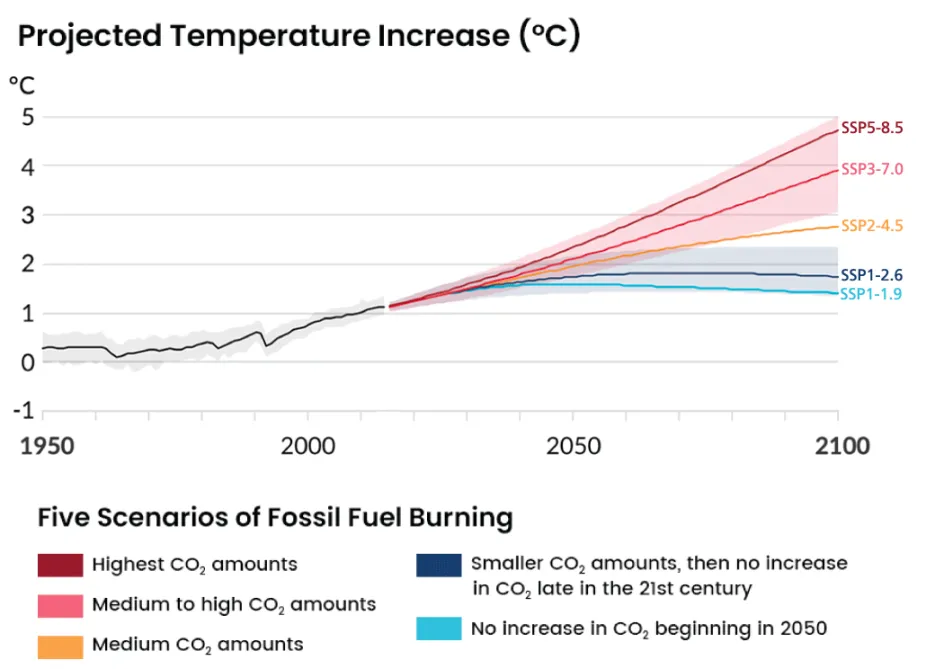Compare IPCC Scenarios Interactive
The Intergovernmental Panel on Climate Change (IPCC) recognizes that future human behaviors will play a large role in determining how Earth's climate changes over the coming century. We simply don't know how societies and governments will deal with the problem of human emissions of greenhouse gases (GHG) in the years ahead. To account for this type of uncertainty, the IPCC put forth several possible scenarios of future human greenhouse gas (GHG) emissions. These scenarios are based on Shared Socioeconomic Pathways (SSPs), which determine likely emissions of greenhouse gases based on different climate policies. The table below provides an overview of the five major scenarios used in the IPCC's 2021 report.
| Scenario | Description | Expected Temperature Increase |
| SSP1-1.9 Most Optimistic |
No increase in greenhouse gas emissions. Global CO2 emissions do not increase (are cut to net zero) by ~2050. | 1.5°C |
| SSP1-2.6 Next Best |
Small levels of greenhouse gas emissions. Severe CO2 emissions cuts, and no longer increase (are cut to net zero) after 2050. | 1.8°C |
| SSP2-4.5 Middle of the Road |
Medium greenhouse gas emissions scenario. CO2 emissions start to fall around mid-century but do not reach net zero until after 2100. | 2.7°C |
| SSP3-7.0 Dangerous |
Medium to High greenhouse gas emissions scenario. Emissions rise steadily, with total carbon dioxide double the current level by 2100. | 3.6°C |
| SSP5-8.5 Avoid at All Costs |
Highest greenhouse gas emissions scenario. Yearly emissions amounts are double current levels by 2100. | 4.4°C |
Find the predicted 2100 temperature values for each scenario as plotted on the graph.

The recent IPCC reports used five greenhouse gas emissions scenarios, from the optimistic path of no new increases in carbon dioxide emissions by 2050, to an extremely dangerous path of very high emissions levels throughout the entire rest of the century.
IPCC
Consider the following questions:
1. What is the range of average global temperature increases that climate models predict for each scenario?
2. Based on your observations of energy use in your community and the world, which scenario do you think might be most likely?